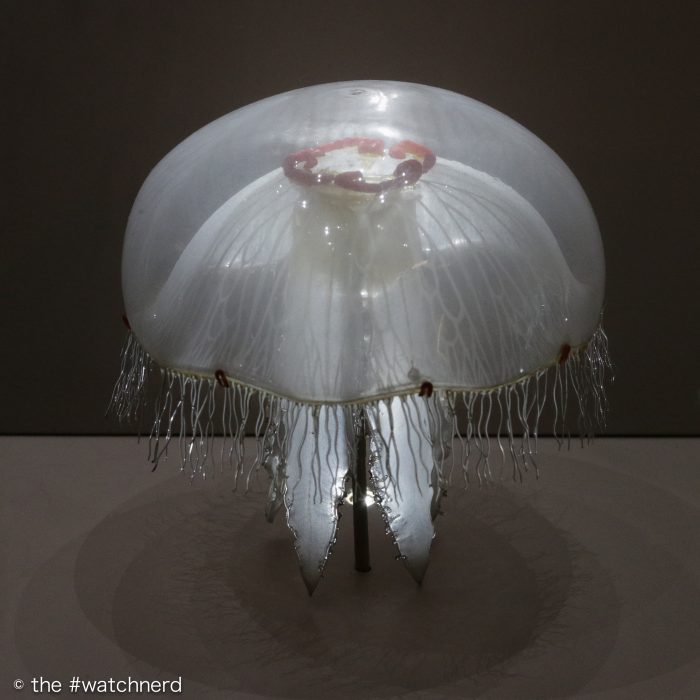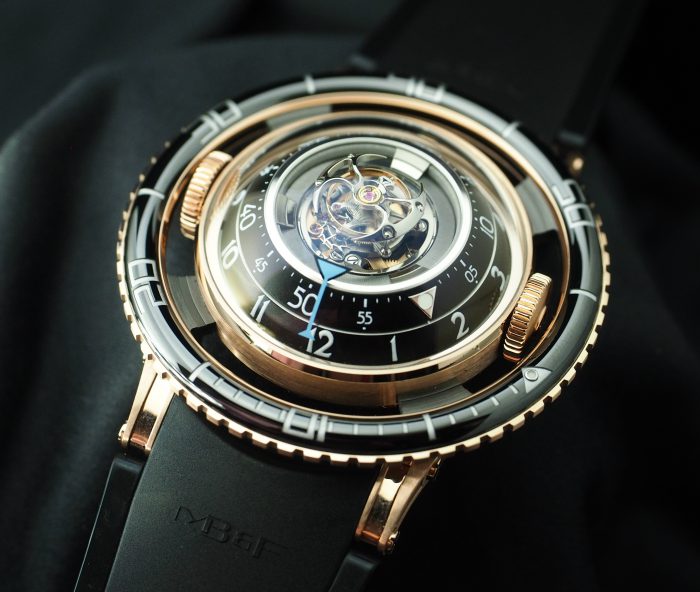However, all this changed when a Dresden-based lampmaker called Leopold Blaschka was becalmed during a voyage to the United States. As the (possibly apocryphal) story goes, Blaschka took to sketching and studying marine invertebrates as a way to escape his melancholia following the death of his wife. This part-time pursuit later became a full-time occupation, as he realised that his lampworking skills could be put to another use, making three-dimensional glass models of the sea creatures he had observed.

Thus began a rather strange success story, as Blaschka, and his son Rudolph, made approximately 10,000 glass animals and flowers over a period of almost thirty years. Many of the techniques they used are still unknown, and the conservation of these delicate, beautifully shaped and remarkably realistic models remains a challenge for the institutions that own them. The Muséum d’Histoire Naturelle in Genève is one such institution; I visited its marvellous collection of jellyfish, molluscs and anemones en route to a meeting with Charris Yadigaroglou at MB&F’s M.A.D. Gallery on the Rue Verdaine a couple of years ago.
[youtube https://www.youtube.com/watch?v=aI83KEkUrTE]
Max Büsser says that the idea for the HM7 Aquapod, his ninth (and increasingly mis-named) Horological Machine, came to him when he saw his wife being stung by a jellyfish. Whatever the inspiration, this medusozoan monstrosity perfectly intersects my zoology / #watchnerd Venn Diagram. Like the Blaschka models, the HM7 is a stunning piece of functional art, and one that is increasingly difficult to categorise. Is it a diver’s watch? Is it really a wrist-mounted jellyfish?

The first thing you notice about the HM7 Aquapod is its size. At almost 54mm across and over 21mm tall, the watch could quite easily sit in a stand atop a desk like one of MB&F’s Co-creations with L’Epée 1839. A large, unblinking eye sits in the centre of the machine, surrounded by a transparent membrane housed within a concentric ring. This eye is a 60 second flying tourbillon – the same tourbillon that was used in the HM6 Space Pirate. But in the Aquapod, the movement architecture has been rotated, so that the “engine” of the horological machine is oriented vertically, rather than horizontally, giving the Aquapod a fanciful, almost clock-like feel.
This also marks a rather important occasion in the history of MB&F; although Eric Giroud assisted in the movement design, the concept and development was all completed in-house – a first for the brand. Ruben Martinez took the lead on the project, which has produced one of the most visually interesting mechanical movements of the last few years. The flying tourbillon is supported by a very industrial-looking gear train, which contrasts perfectly with the beautifully polished steel pillars that hold aloft the totemic battle axe-shaped cage. Pieces of Ambient Glow Technology (via friend James Thompson) surround the tourbillon, in a nod to the jellyfish’s customary bioluminescence.

Far below is hung a solid titanium motor, edged in platinum to provide the necessary mass to power the automatic movement. Twelve knife-like tentacles curl gently, but forcefully away from the case. Each of the chamfered blades is split by a Superluminova’d spine, with alternating high polish and brushed finishes. From below, you might be forgiven for thinking that the influence for the Aquapod was not a jellyfish, but rather a lamprey. However, the highly-domed, double AR sapphire glass crystal and softly-curved display back lend a far more gentle profile.

Sticking to its marine-inspired roots, the watch is wound and set by two separate, oversized crowns – ideal if you’re wearing gloves. A large, rubber ring-like ceramic bezel surrounds the watch, attached to the body of the watch at each of the hinged lugs. The semi-toric profile is unusual and rather lovely – and it’ll even work as a dive timer (although MB&F staff were at pains to point out that the 50m WR-rated Aquapod is not a diver’s watch). Time is read from the two rotating minute and hour rings – as with the Arachnophobia and Starfleet Machines. A helpful triangle pip acts as a 60 minute marker; aligning the corresponding bezel pip with with minute marker allows elapsed time to be read.

Make no mistake, the HM7 Aquapod is bonkers: it’s a huge, expensive and completely over-the-top wristwatch that further blurs the line between MB&F’s performance art pieces, table clocks and wrist watches. In the introduction to their 2002 exhibition, the Design Museum in London noted that the Blaschka’s glass creatures “do not fit comfortably into any of the conventional pigeonholes of science, art, craft or design, but seem to have at least one tentacle in each of them.” Just like the Blaschkas, it’s increasingly difficult to pigeonhole Max Busser, his highly talented staff and friends.
In a year that is already appearing rather sobering, the HM7 Aquapod glows brightly.
The Rose Gold version is limited to 66 pieces, and priced at CHF118k; the Titanium version is limited to 33 pieces, and comes in at CHF98k. All prices exclude taxes.


Комментариев нет:
Отправить комментарий